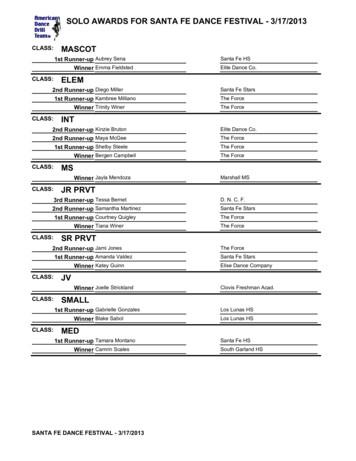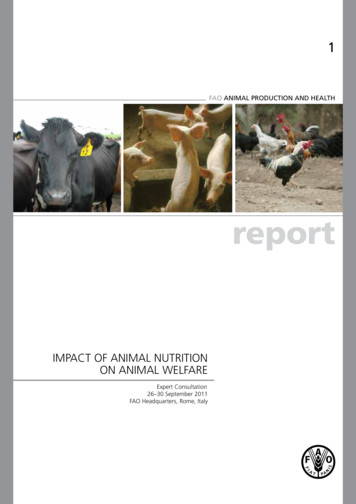How To Calculate Your GPA - GEMSAS
How to calculate your GPAThis section explains how to calculate your GPA. In general this information applies to all medicalschools and the Doctor of Dental Surgery at the University of Melbourne, but please note localvariations outlined on university websites and in the university-specific information pages in theMedicine Admissions Guide. The Doctor of Optometry at the University of Melbourne uses aWeighted Average Mark (WAM) so this information is not relevant for that.You can use this information to create your own GPA calculator in a spreadsheet, or you can use anon-line GPA calculator.GEMSAS will use percentage results to calculate your GPA and will use grades only wherepercentage results are not provided on transcripts or results retrieved electronically through ARTS.Your GPA calculation will be an estimation for your information only.Before you calculate your GPA, you should read the sections in the Admissions Guide:‘Before You Apply’ and ‘How To Apply’Although some schools use postgraduate studies in GPA calculations, these instructions are forundergraduate studies. You can follow the instructions given here for undergraduate study and usethe same principles to calculate your GPA using your postgraduate results if you are applying for oneof the schools that use them. Please see the Admissions Guide for this information.Step OneGroup your subjects into GPA years.3 year Bachelor degreesWhere applicants have undertaken a Bachelor degree which can normally be completed in 3 years offull-time study (e.g. Commerce, Arts), all the subjects studied in this degree will be used in the GPAcalculations.For example, if your degree is a 3 year BSc comprising 300 credit points of completed units orsubjects, you should divide your subjects or units into 3 groups of about 100 credit points each,based on the order you completed them. Any failed or repeated subjects should be included.The three years of equivalent full-time study are known as “Final-minus-2”, “Final-minus-1” and“Final” years.Longer coursesApplicants who have completed degrees of more than 3 years in duration – e.g. Law, Engineering –should only use the subjects which comprise the last 3 full time equivalent years of study. If youcompleted a 5 year full time Engineering degree, you should not include the subjects in your first orsecond years of full time equivalent study.Similarly, if you undertook a one year full time equivalent Honours course after finishing a 3 yearBachelor degree, you should not include the subjects studied in the first year of your Bachelordegree.
If your course was a five year Engineering degree comprising 180 credit points, you should divide thesubjects or units into 5 groups of about 36 credit points each. The subjects or units in the first twogroups will not be included in the GPA calculations.Study in the current yearIf you are completing your qualifying degree this year and already have your first semester results,you should include them in your GPA calculations. They will typically only constitute half of the Finalyear results.If you current study is an honours year, you will most likely have no first semester results. Youshould calculate your GPA using your bachelor degree results. Check school entries in theAdmissions Guide for information about how they may use honours results from current study.Part-time studyIf you completed a 3 year BSc over 6 years of part time study, you should still divide all the subjectsor units into 3 roughly equal groups, based on the order you completed them. These groupsconstitute your Final-minus-2, Final-minus-1 and Final years.If you have completed a combined degree or transferred between different universities or courses,or have received credit for prior studies (including study abroad or exchange semesters), you mustrecord all such enrolments within the relevant three year full-time-equivalent period. Note that youwill need to provide all relevant official transcripts for any study undertaken at a university that isnot a participant in ARTS (see Appendix A). Note that it may be difficult for you to estimate a GPA inthis circumstance.Step TwoEnter the credit points and actual marks or grades for each subject or unitUsing the groupings of subjects or units described in Step 1 above, list the subjects or units makingup the last three full time equivalent years of study in chronological order, in their year groupings.All results from the last three full time equivalent years of study, including fails and repeatedsubjects, must be included.For each subject or unit enter the subject name or subject code. Remember that the “GPA Year”refers to Final-minus-2, Final-minus-1 and Final years, so each GPA year may include subjects orunits taken in different calendar years, particularly if you have studied part-time. It may also includesubjects taken at different levels. For instance you may have taken a first-year subject in the finalyear of your degree so that will be counted in the Final GPA year.Unit value of subjectEach degree is made up by a certain number of subjects or units, credit points or contact hours, withsubjects or units offered at the first, second and third academic year levels (for a three-year bachelordegree). Enter the unit value or credit points value of each subject or unit, as these appear on yourtranscript.
Actual resultEnter the actual result received in each subject exactly as reported on the transcript (e.g. DN, or 76).When both letter grades and percentages are given, use the percentages. If you have only lettergrades you will use those. From the conversion table (Appendix A) find the GPA for each subject.You will now have the following information for each subject: Subject name/codeCredit points/unit valuesResult (as a percentage or grade)GPA (from the conversion table)Step ThreeThe GPA calculationYou will now create an additional data item for each subject by multiplying the GPA by the creditpoints.You will now have the following information for each subject: Subject name/code(U) Credit points/unit valuesResult (as a percentage or grade)GPA (from the conversion table)(P) Value of GPA x credit points(i) Add the unit values (credit points)of all subjects or units (including those failed and/or repeated)within each GPA year.( Total U1 U2 U3 )(ii) Add the Values of GPA grades x credit points (including those failed and/or repeated) for allsubjects within each GPA year.( Total P1 P2 P3 )(iii) To calculate the GPA for Final-minus-2 year, divide the total of P values by the total of U values(GPA P/U)
(iv) Repeat this calculation for each GPA year.You should now have three GPAs (for Final-minus-2, Final-minus-1 and Final years).Weighted GPAMost universities (refer to individual university-specific information in this Guide) use a weightedGPA, calculated as follows: ((Final-minus-2 GPA x1) (Final-minus-1 GPA x2)) (Final GPA x3))/6Unweighted GPAFor those universities that use unweighted GPAs, simply find the average of the three GPAs ((Final-minus-2 GPA Final-minus-1 GPA Final GPA )/3
Appendix A: Undergraduate Grading System Conversion 54535251504948474645 75HHD7.0HD/ 7/A7.0D/66.75GHI7.0 87.0D6.75H2A6.5D/DI/6/B/DN6.25CR/55.75A /A/A7.0B 25C 5Pass Div 14.75P/44.5P4.5P4.25P/PA/44.25C4.554.25Pass Div 114.0UP/CQ/PC/33.5F/N/ 0PC/PX3.5D3.5F0E0* Conceded pass, faculty pass, etc. – GPA grade of 3.5. Otherwise GPA of zero# If you have a percentage mark where the minimum for an unrestricted pass grade is 50 per cent, use column A to read offthe corresponding GPA grade.Honours degree (for Griffith or used only where
no subject results are available)AwardFirst2A2BThirdGPA Grade7.06.05.04.0Conversion Table Code (only where no subject results are available)ColumnABCDEFGHUse Column A if you have an official record of your mark (percentage)ACU, Adelaide, Bond, Canberra, Central Queensland, Charles Sturt, Flinders, Griffith, James Cook,Macquarie, Newcastle, New England, NSW, Notre Dame, Queensland, QUT, Southern Cross, SouthernQueensland, Sunshine Coast, Swinburne, Sydney, UTS, Western Sydney, WollongongSouth AustraliaCharles DarwinANU, Ballarat, Deakin, Edith Cowan, La Trobe, Monash, Murdoch, RMIT, Tasmania, Victoria, WesternAustraliaMelbourneCurtinNew Zealand universities and Polytechnics
Your GPA calculation will be an estimation for your information only. Before you calculate your GPA, you should read the sections in the Admissions Guide: ‘Before You Apply’ and ‘How To Apply’ Although some schools use postgraduate studies in GPA calculations, these instructions are for undergraduate studies.File Size: 484KB
Spring Semester 2018 Sem. Amt. /- IFC Scholastic Number Semester GPA Number Semester GPA Number Semester GPA Cumulative Cumulative GPA AMA Status Members GPA Rank Members GPA Rank Members GPA Rank GPA GPA Rank Trend Alpha Gamma Rho * * *
GPA List the courses and grades that comprise your BCPM GPA, in addition to the GPA calculation. Follow the format provided in AMS. You can calculate your BCPM GPA by using the GPA calculator found in your Worksheet on PennInTouch. Include the grades earned in any BCPM course, as well as other courses with content that falls primarily in these
g acceleration constant, 9.81m/s2 H nano, micro, macrohardness, kg/mm2,GPa HB Brinell hardness number, kg/mm2,GPa HBGM geometric mean of minimum and maximum Brinell hardness, kg/mm2,GPa HBK Berkovich hardness number, kg/mm2,GPa HK Knoop hardness number, kg/mm2,GPa HM Meyer hardness number, kg/mm2,GPa HRC Rockwell C hardness
GPA Seal Catalog GPA SEAL CATALOG GARLOCK KLOZURE GPA Seal Catalog 1 . 2 GPA Seal Catalog Alumina Processing In the alumina production process, the bauxite and hydrated alu-mina in suspension are pumped over long distances by very large slurry
1 PLACE Santo Nino Regional Catholic INT Dancing Angels 3.7 MS GPA 2 PLACE Marshall MS MS Sparklettes 3.284 1 PLACE Yucca MS MS Chap Dance 3.667 JR PRVT GPA 1 PLACE D. N. C. F. JR PRVTThe Flames 3.564 SR PRVT GPA 1 PLACE D. N. C. F. SR PRVTThe Heat 3.609 JV GPA 1 PLACE Clovis Freshman Acad. JV Freshman Wildcadettes 3.556 SMALL GPA 2 PLACE .
List your degree program and graduation date. If your GPA is above a 3.0, include it within this section. If your cumulative GPA is not above a 3.0 but your Major GPA is, then you may list this GPA ins
The following conversion chart shall be used in the calculation of grade point averages pursuant to section 5.8 of this chapter (relating to Uniform Grade-Point Calculation for Admission to General Academic Teaching Institutions): Numerical Grade AP/IB/Dual Credit GPA Pre-AP Pre-IB Honors GPA Regular Course GPA Letter Grade
An expert meeting was held to review the impact of animal nutrition on animal welfare. During the meeting, three major tasks were undertaken for both ruminant and monogastric species: 1) Identify feeding options for different livestock production systems (extensive, mixed crop-livestock, and intensive) that improve animal welfare while increas - ing profitability of the livestock producers and .























